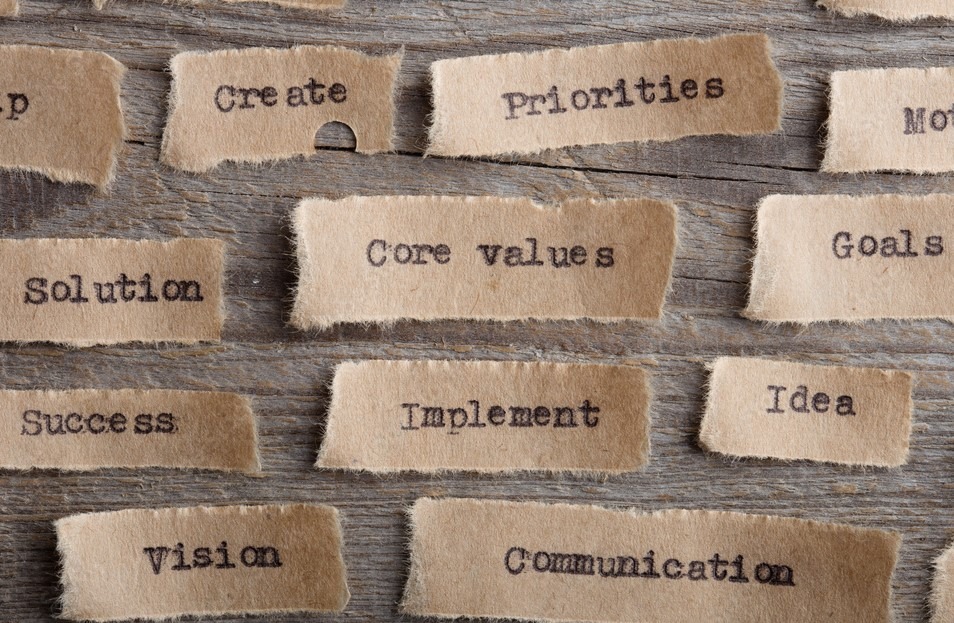Part 1 of this series highlighted the significance of the intentions behind our actions. It addressed the “Why?” behind giving a meaningful apology. That being said, our actions themselves (along with their outcomes) also matter a great deal. If they didn’t, we probably wouldn’t need to say “I’m sorry,” half as often as we do… In the world of apologies, good intention without effective expression typically delays healing. It’s not enough to feel remorseful, or to want the other person to feel better and have your relationship mended. Love is indeed a verb. Thus, this second entry addresses the anticipated “How?” of an apology.
A Recipe for Repair
As with culinary recipes, the following steps provide a basic outline for your creation. If you’re a novice in the kitchen, it’s probably safest to adhere closely to the original formula. As your experience and skills develop, you can tweak it.
The following “recipe” was adapted from Chapman and Thomas’ (2013) concept of the five languages of apology. The most notable change here is that each language is being treated as its own step in the process of apologizing. Any given step may be more appealing to someone over another (the addition of sugar, so to speak). However, a basic cake needs all of sugar, butter, eggs, flour, and baking powder to fully form. Rather than determining which language the hurt party favours, I encourage you to dedicate yourself to honouring each of the five. Apologizing is a process. Do it right, not rushed.
Disclaimer: If somebody has made it clear that your cake would make them sick, don’t bake one. Apologizing can be more hurtful to the other person if they’ve requested no contact or put other clear boundaries in place.
Step 1 – Express Regret (i.e. Actually Say “I’m Sorry”)
The first step is one that surprisingly gets glossed over more often than you may think: It’s directly saying (or writing) the words “I’m sorry.” Don’t underestimate the power of something so simple! Delivering these words in a sincere way can help soften defenses and set a gentler tone for the rest of the dialogue.
Be Specific: Name What You’re Sorry For
As the title of this series suggests, “I’m sorry” is typically necessary, but insufficient for a proper apology. These two words let the other person know you’re baking a cake for them. However, it’s important to clarify what kind of cake that is. Moreover, it’s important to determine if it’s the kind of cake they even want. Following “I’m sorry” with a specific acknowledgment of what it is you’re sorry for is essential to forming the right kind of apology.
Generalized “sorries” often seem placating, especially if you’ve developed the tendency to toss them around like peanuts at a ballgame. A specific “I’m sorry” slows things down, communicates greater sincerity, and gauges if you’re investing into the right issue. Save yourself some potential energy by clarifying from the outset what exactly it is you’re trying to mend.
Stay the Course: Keep Those Defenses Down
If you hear a response such as “That’s not what I’m upset about!”, don’t lose heart. What we think we should apologize for sometimes isn’t the true source of pain for the other person. In these cases, patiently welcome their feedback. Appreciate that they’re still showing some level of engagement (after all, underneath every complaint is a hidden longing!). Adopt a genuinely curious stance to better understand the heart of the matter for them. Figure out the kind of cake they’re craving before moving on to the next steps.
Be Sorry for Your Own Behaviour. That’s It.
Statements such as “I’m sorry you’re hurting…” or “I’m sorry you think…” will typically escalate conflict. At best they evade personal responsibility; at worst, they reverse blame and shame the other person for their natural feelings. Someone else’s internal experiences (i.e. feelings, thought processes) are not ours to own. You may feel genuine sympathy towards someone else’s hurt, pain, anger, etc. However, if you’re apologizing, the focus needs to remain on your contribution to that experience. (If you want to have a different kind of conversation about what’s going on for that person, go for it. Just don’t try masking it as an apology).
Step 2 – Accept Responsibility
In Step 1 you clarified the behavior for which you’re apologizing. Step 2 involves communicating your understanding of the impacts of those actions (i.e. “What I did was wrong because…”). Remember, what’s hurtful to one person may or may not be hurtful to another, depending on everyone’s unique life experiences. This step is where you get to communicate your (developing) intimate understanding of the other person. You’re essentially saying, “Based on what I respectfully know (or am learning) about your values, beliefs, history, etc., it makes sense to me that I upset you when I…”. Validation such as this keeps two people connected when conflict is threatening to drive them apart. It shows an ability and willingness to step into the
other person’s shoes.
Helpful hint: “I was wrong” carries more weight than “You are right.” The “I” is what communicates the personal ownership.
“But” Nothing
When an “I’m sorry” is followed by a “but” or an “I just”, it’s negated. Remember, a meaningful apology should serve only to soothe the other person (Lerner, 2017). Apologize only when you can keep excuses and justifications in check. In other words, don’t spoil your lovely cake batter by tossing in a rotten egg.
“If… Then…”
In desperate instances where two people’s perspectives of what happened are vastly different, an “If… then…” statement can be useful. For example, you may not agree that you said or did something for which the other person is craving an apology. To maintain connection, you can still validate how a comment or action like that would be hurtful (e.g. “If I repeated old patterns and swore at you, then I was wrong. I know swearing is an immature way of communicating that fails to show the respect I have for you and our relationship”).
A word of caution to use these kinds of statements sparingly. Although they demonstrate an understanding of why a given behaviour is wrong, they still skirt around truly owning that behaviour. The cake may taste a little off as a result of substituting butter with applesauce… (That’s a real thing in the cooking world, FYI!)
Step 3 – Make Amends
This step is about trying to right the wrong and rebuild trust. There may be some practical damages for which you can compensate the other person (e.g. lost time or money, retracting a public remark). Often though, the relational damages in need of restitution are less visible.
After a hurt, we’re inclined to take a protective step back in the relationship. We question: “How could this person do that? I really thought they understood and cared about me…” This reaction of doubt is a natural one, to be respected rather than insulted by. Your task at this stage is to reassure the other person of your respect, appreciation, commitment, etc., now and moving forward. How you do that depends on what you know about their unique beliefs, values, wants and needs. (Chapman’s concept of “Love Languages” can be somewhat helpful here). It’s also okay to directly ask: “What can I do, right now, to start reassuring you of my love?” (or whatever else was called into question).
Slow and Steady
The magnitude of the hurt will indeed impact the length of time and the action(s) required to rebuild trust. An offhand comment, flaking out on plans, and secret-keeping all vary in impact, for example. It’s fairly easy to determine repair costs for material goods, but relational damages are much more difficult to quantify. Take the necessary time to rebalance the scales. Desperation to produce a cake for the other person may tempt you to increase the temperature of the oven. Resist that urge, or you’ll just end up with a gooey middle and burnt edges.
Step 4 – Genuinely Repent
This step might be the simplest of the five, but changed behaviour is the sugar in the cake for a lot of people. So far, you’ve named and taken ownership over your mistake, and are trying to right the wrong. Now, it’s time to articulate your very specific plan to prevent yourself from repeating that same wrong in the future.
The other person might appreciate your cake, but they don’t want to eat the same thing again and again…
Step 5 – Check In: “What More do You Need?”
In Part 1 of this series, I specifically said that a proper apology doesn’t make requests of the other person. I stand by that. However, Chapman and Thomas (2013) make a case for “Requesting Forgiveness”, stating that it’s about giving the other person some power back. They explain that the question “Do you forgive me?” isn’t really designed to reassure the Apologizer. Rather, it’s trying to gauge what more the Apologizee might need to feel soothed. Time and space? More warmth and closeness? A different plan of action for preventing future mistakes? Ownership over a different or additional hurt? (Because really, hurt compounds quickly during conflict!).
Let’s simply call this step a Check-In. It invites the other person deeper into the healing process, if they wish to go there with us. It encourages them to actively reflect on their current needs and what’s maybe been missed in the previous steps. That’s right, Step 5 may very well loop you back to other parts of the repair process.
Here’s the thing: The most beautiful cakes featured in gourmet magazines, weddings and professional events are those multi-layered ones. The ones to which the passionate baker patiently dedicated themselves. You can’t control whether or not the person to whom you’re apologizing will eat your cake. They’re certainly not obliged to. But you can control the focus and the heart that you put into the quality of your craft. At the end of the day, there’s a lot of value in being able to honestly say “I did the best I could.”
To Add an Unstuck Psychologist to Your Network
These general steps are indeed easier said than done. If you’d like some more specialized help navigating a relationship in your life, consider adding one of us Unstuck Psychologists to your support network! Simply call our Front Desk (780-784-8825) or send an email to [email protected] to book your risk-free consultation. In-person and teletherapy sessions are available.
References
Brown, Brene. (Host). (2006, May 6). I’m sorry: How to apologize & why it matters (No. 12) [Audio podcast episode]. In Unlocking us. Production company. https://brenebrown.com/unlockingus/
Chapman, G., & Thomas, J. (2013). When sorry isn’t enough: Making things right with those you love. Northfield Publishing.
Lerner, H. (2017). Why won’t you apologize? Healing big betrayals and everyday hurts. Gallery Books.












